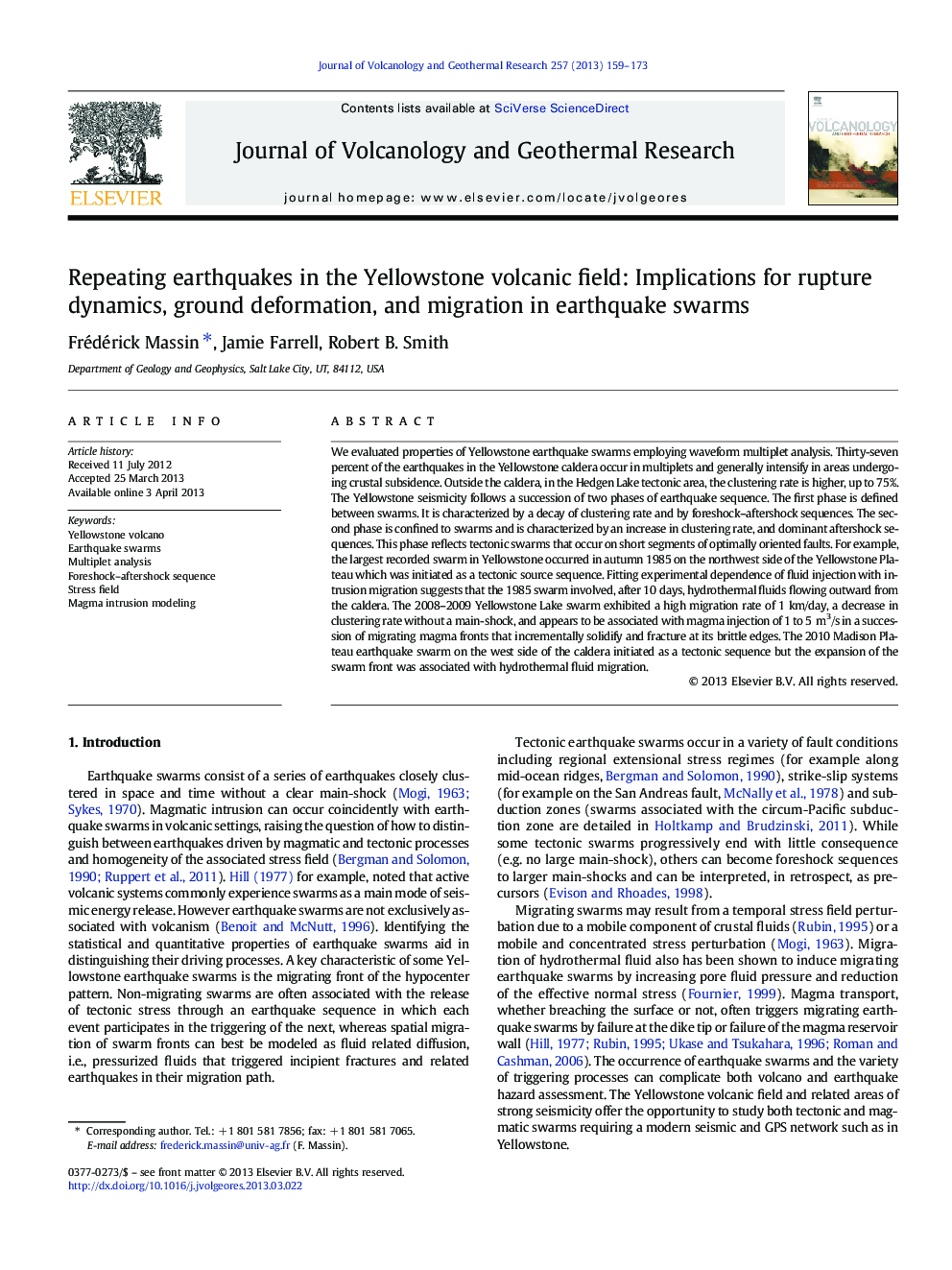| کد مقاله | کد نشریه | سال انتشار | مقاله انگلیسی | نسخه تمام متن |
|---|---|---|---|---|
| 4714832 | 1638364 | 2013 | 15 صفحه PDF | دانلود رایگان |
• Yellowstone seismicity is dominated by swarms with clusters of repeating earthquakes.
• The 1985 Yellowstone swarm was associated with hydrothermal fluid migration.
• The 2008 Yellowstone Lake swarm may have been associated with magma intrusion.
• Multiplets activity intensifies in periods of crustal subsidence.
We evaluated properties of Yellowstone earthquake swarms employing waveform multiplet analysis. Thirty-seven percent of the earthquakes in the Yellowstone caldera occur in multiplets and generally intensify in areas undergoing crustal subsidence. Outside the caldera, in the Hedgen Lake tectonic area, the clustering rate is higher, up to 75%. The Yellowstone seismicity follows a succession of two phases of earthquake sequence. The first phase is defined between swarms. It is characterized by a decay of clustering rate and by foreshock–aftershock sequences. The second phase is confined to swarms and is characterized by an increase in clustering rate, and dominant aftershock sequences. This phase reflects tectonic swarms that occur on short segments of optimally oriented faults. For example, the largest recorded swarm in Yellowstone occurred in autumn 1985 on the northwest side of the Yellowstone Plateau which was initiated as a tectonic source sequence. Fitting experimental dependence of fluid injection with intrusion migration suggests that the 1985 swarm involved, after 10 days, hydrothermal fluids flowing outward from the caldera. The 2008–2009 Yellowstone Lake swarm exhibited a high migration rate of 1 km/day, a decrease in clustering rate without a main-shock, and appears to be associated with magma injection of 1 to 5 m3/s in a succession of migrating magma fronts that incrementally solidify and fracture at its brittle edges. The 2010 Madison Plateau earthquake swarm on the west side of the caldera initiated as a tectonic sequence but the expansion of the swarm front was associated with hydrothermal fluid migration.
Journal: Journal of Volcanology and Geothermal Research - Volume 257, 1 May 2013, Pages 159–173
